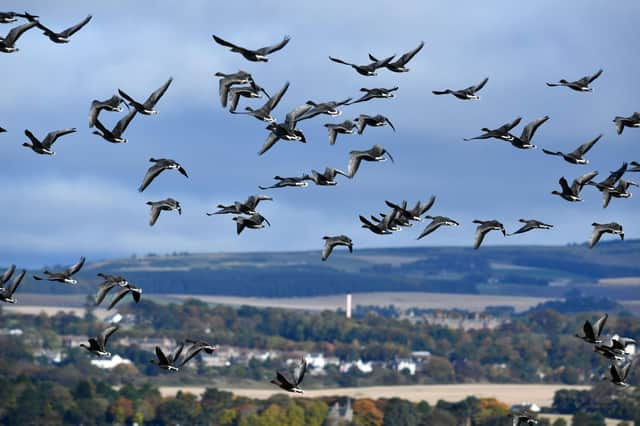How birds fuel themselves for long distance mass migrations across continents revealed


An American research team observed migratory birds in flight and found they burn vast amounts of protein early on in their journeys.
The breakthrough study has turned existing theories - which presumed migrating birds ramped up their protein consumption towards the end of their journey - completely on its head.
Advertisement
Hide AdAdvertisement
Hide AdThe scientists also discovered that birds burned fat at a consistent rate throughout their flights and that they can burn a fifth of their muscle mass and build it back up in a matter of days.
Though the researchers admit they do not yet know exactly why the birds burn protein so early in their journeys, the possible answers open up a wide range of future research avenues.
To conduct their experiment the study team, led by researchers at the University of Massachusetts Amherst (UMass Amherst), captured dozens of migrating birds.
These birds, captured at the Long Point Bird Observatory in the central Canadian province of Ontario using “mist nets”, were comprised of 20 blackpoll warblers - small songbirds which migrate each autumn from as far as Alaska in North America to the northernmost regions of South America - and 44 yellow-rumped warblers, a shorter-distance migrant.
Many songbirds in North America make twice-yearly, non-stop migratory flights of more than 1,000 miles to travel from their breeding to their winter grounds - flapping their wings for up to 100 hours without rest.
The study team then transported these birds to the Advanced Facility for Avian Research at Western University in Ontario, which has a specialised wind tunnel for observing birds in flight.
The researchers measured the birds' fat and lean body mass prior to their flight and, after waiting for the sun to set - because the birds migrate at night - let them loose in the wind tunnel.
The team would then watch for when a bird would decide to take a rest.
Advertisement
Hide AdAdvertisement
Hide AdAt this point, the scientists would collect the resting bird to again measure its fat and lean body mass content.
On comparing these measurements with those taken pre-flight, the scientists discovered that the birds fueled themselves by burning lots of fat and a surprising amount of protein early on in their flights, as they needed to use every ounce of muscle to continuously flap their wings.
Dr Cory Elowe, the paper's lead author and a postdoctoral researcher in biology at UMass Amherst, said: "The birds in our tests burned fat at a consistent rate throughout their flights.
"But we also found that they burn protein at an extremely high rate very early in their flights, and that the rate at which they burn protein tapers off as the duration of the flight increases.
"One of the biggest surprises was that every bird still had plenty of fat left when it chose to end its flight.
"But their muscles were emaciated. Protein, not fat, seems to be a limiting factor in determining how far birds can fly."
Comments
Want to join the conversation? Please or to comment on this article.